研究成果

Jan, 2022
Chemotherapy is the mainstream treatment modality for invasive breast cancer. Unfortunately, chemotherapy-associated adverse events can result in early termination of treatment. Paradoxical effects of chemotherapy are also sometimes observed, whereby prolonged exposure to high doses of chemotherapeutic agents results in malignant states resistant to chemotherapy. In this study, potential synergism between doxorubicin (DOX) and pulsed electromagnetic field (PEMF) therapy was investigated in: 1) MCF-7 and MDA-MB-231 cells in vitro; 2) MCF-7 tumors implanted onto a chicken chorioallantoic membrane (CAM) and; 3) human patient-derived and MCF-7 and MDA-MB-231 breast cancer xenografts implanted into NOD-SCID gamma (NSG) mice. In vivo, synergism was observed in patient-derived and breast cancer...

Jan, 2022
Since 2019, severe acute respiratory syndrome coronavirus 2 (SARS-CoV-2) has been rapidly spreading worldwide, causing hundreds of millions of infections. Despite the development of vaccines, insufficient protection remains a concern. Therefore, the screening of drugs for the treatment of coronavirus disease 2019 (COVID-19) is reasonable and necessary. This study utilized bioinformatics for the selection of compounds approved by the U.S. Food and Drug Administration with therapeutic potential in this setting. In addition, the inhibitory effect of these compounds on the enzyme activity of transmembrane protease serine 2 (TMPRSS2), papain-like protease (PLpro), and 3C-like protease (3CLpro) was evaluated. Furthermore, the capability of compounds to attach to the spike-receptor-binding...
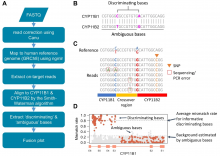
Jan, 2022
Glucocorticoid-remediable aldosteronism (GRA) is a form of heritable hypertension caused by a chimeric fusion resulting from unequal crossing over between 11β-hydroxylase (CYP11B1) and aldosterone synthase (CYP11B2), which are two genes with similar sequences. Different crossover patterns of the CYP11B1 and CYP11B2 chimeric genes may be associated with a variety of clinical presentations. It is therefore necessary to develop an efficient approach for identifying the differences between the hybrid genes of a patient with GRA. We developed a long-read analysis pipeline named GRAde (GRA deciphering), which utilizes the nonidentical bases in the CYP11B1 and CYP11B2 genomic sequences to identify and visualize the chimeric form. We sequenced the polymerase chain reaction (PCR) products of the...
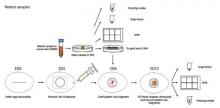
Jan, 2022
A variety of in vivo experimental models have been established for the studies of human cancer using both cancer cell lines and patient-derived xenografts (PDXs). In order to meet the aspiration of precision medicine, the in vivomurine models have been widely adopted. However, common constraints such as high cost, long duration of experiments, and low engraftment efficiency remained to be resolved. The chick embryo chorioallantoic membrane (CAM) is an alternative model to overcome some of these limitations. Here, we provide an overview of the applications of the chick CAM model in the study of oncology. The CAM model has shown significant retention of tumor heterogeneity alongside increased xenograft take rates in several PDX studies. Various imaging techniques and data analysis have been...
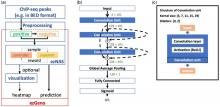
Jan, 2022
To facilitate the process of tailor-making a deep neural network for exploring the dynamics of genomic DNA, we have developed a hands-on package called ezGeno. ezGeno automates the search process of various parameters and network structures and can be applied to any kind of 1D genomic data. Combinations of multiple abovementioned 1D features are also applicable. For the task of predicting TF binding using genomic sequences as the input, ezGeno can consistently return the best performing set of parameters and network structure, as well as highlight the important segments within the original sequences. For the task of predicting tissue-specific enhancer activity using both sequence and DNase feature data as the input, ezGeno also regularly outperforms the hand-designed models. Furthermore,...
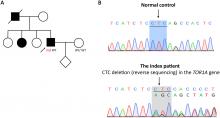
Jan, 2022
A heterozygous three-nucleotide (GAG) in-frame deletion in the TOR1A gene causes the rare disease, dystonia (DYT1), which typically presents as focal limb dystonia during adolescence, then spreads to other limbs. This study investigated the frequency and clinical features of DYT1 in a Taiwanese dystonia cohort. We performed targeted next generation sequencing in 318 patients with primary dystonia. We identified one DYT1 family with various types of dystonia, and we described the clinical presentations observed in this family during a 30-year follow-up. We compared the clinical characteristics to those reported in previous studies on DYT1 from 2000 to 2020. Among 318 patients, we identified only one DYT1 patient (0.3%) with an autosomal dominant family history of dystonia. The proband was...
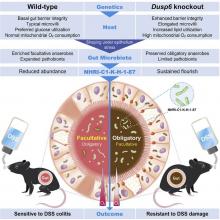
Nov, 2021
Strengthening the gut epithelial barrier is a potential strategy for management of gut microbiota-associated illnesses. Here, we demonstrate that dual-specificity phosphatase 6 (Dusp6) knockout enhances baseline colon barrier integrity and ameliorates dextran sulfate sodium (DSS)-induced colonic injury. DUSP6 mutation in Caco-2 cells enhances the epithelial feature and increases mitochondrial oxygen consumption, accompanied by altered glucose metabolism and decreased glycolysis. We find that Dusp6-knockout mice are more resistant to DSS-induced dysbiosis, and the cohousing and fecal microbiota transplantation experiments show that the gut/fecal microbiota derived from Dusp6-knockout mice also confers protection against colitis. Further culturomics and mono-colonialization experiments show...
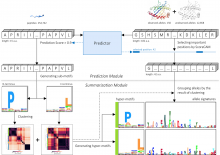
Oct, 2021
The selection of peptides presented by MHC molecules is crucial for antigen discovery. Previously, several predictors have shown impressive performance on binding affinity. However, the decisive MHC residues and their relation to the selection of binding peptides are still unrevealed. Here, we connected HLA alleles with binding motifs via our deep learning-based framework, MHCfovea. MHCfovea expanded the knowledge of MHC-I-binding motifs from 150 to 13,008 alleles. After clustering N-terminal and C-terminal sub-motifs on both observed and unobserved alleles, MHCfovea calculated the hyper-motifs and the corresponding allele signatures on the important positions to disclose the relation between binding motifs and MHC-I sequences. MHCfovea delivered 32 pairs of hyper-motifs and allele...
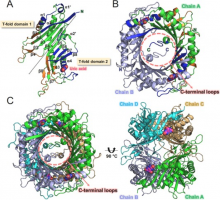
Oct, 2021
Microbial urate oxidase has emerged as a potential source of therapeutic properties for hyperuricemia in arthritic gout and renal disease. The thermostability and long-term thermal tolerance of the enzyme need to be established to prolong its therapeutic effects. Here, we present the biochemical and structural aspects of a hyperthermostable urate oxidase (TbUox) from the thermophilic microorganism Thermobispora bispora. Enzymatic characterization of TbUox revealed that it was active over a wide range of temperatures, from 30 to 70 °C, with optimal activity at 65 °C and pH 8.0, which suggests its applicability under physiological conditions. Moreover, TbUox exhibits high thermostability from 10 to 65 °C, with Tm of 70.3 °C and near-neutral pH stability from pH 7.0 to 8.0 and high thermal...
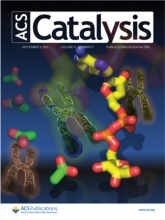
Aug, 2021
O-Acetyl-ADP-ribose (OAADPR) is a signaling molecule identified from the conserved sirtuin reaction in Saccharomyces cerevisiae, involved in the important cellular functions of gene silencing, redox regulation, and aging. Here, we performed biochemical and structural characterization of the yeast Poa1p macro domain in detail, uncovering an unusual deacetylase activity favoring 3″- and 1″-isomers of O-acetyl-ADP-ribose. The unique active-site residues of Poa1p contributing to the distinct substrate specificity thus shed light on the divergent branch of a POA1-like subclass. Moreover, disruption of Poa1p expression in yeast showed a striking sensitivity to transcriptional stress, which implies a physiological role in response to nucleotide depletion. These findings provide biochemical and...